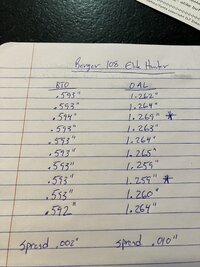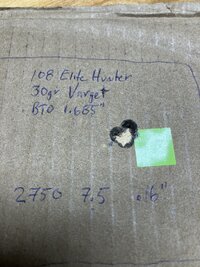Firing an AR-15-style rifle can be a deeply traumatic experience, according to a New York-based journalist who said his recent experience with the popular rifle left him with post-traumatic stress disorder.
“It feels like a bazooka — and sounds like a cannon,” the New York Daily News’ Gersh Kuntzman said in an article published Tuesday. “The explosions — loud like a bomb — gave me a temporary case of PTSD. For at least an hour after firing the gun just a few times, I was anxious and irritable.”
The Daily News column, titled “
What is it like to fire an AR-15? It’s horrifying, dangerous and very very loud,” comes just days after a gunman, 29-year-old Omar Mateen, shot and killed 49 people at a gay nightclub in Orlando, Fla.
Mateen was armed with a handgun and a Sig Sauer MCX rifle, which fires a 5.56 NATO. Though the Sig looks much like an AR-15,
it is in a different class of rifle altogether.
Kuntzman explained he wanted to figure out what it is about semi-automatic rifles like the one used by Mateen that appeals to gun owners, and said he hoped his experience would shed light on the matter.
However, he added, his quest left him not so much enlightened as it left him with emotional scars.
“I’ve shot pistols before, but never something like an AR-15. Squeeze lightly on the trigger and the resulting explosion of firepower is humbling and deafening (even with ear protection),” the journalist wrote.
“The recoil bruised my shoulder. The brass shell casings disoriented me as they flew past my face. The smell of sulfur and destruction made me sick,” he added.
Kuntzman wrote, “Even in semi-automatic mode, it is very simple to squeeze off two dozen rounds before you even know what has happened. In fully automatic mode, it doesn’t take any imagination to see dozens of bodies falling in front of your barrel. All it takes is the will to do it. Forty-nine people can be gone in 60 seconds.”
AR-15s are semi-automatic, as are rifles like the Sig used by Mateen.
“Fully automatic” rifles
are generally illegal for sale to the public, and they can be purchased only after a series of stringent criteria are met, including multiple background checks.
Asked to clarify whether he had shot a fully automatic rifle or a modified version of a commercial AR-15-style rifle, Kuntzman told the
Washington Examiner’s media desk that he had not.
“I did not fire it in fully auto mode,” he said, explaining that he meant to suggest that a rifle like the one used in Orlando would be even more dangerous were it an automatic. “I did not have one. But they exist.”



